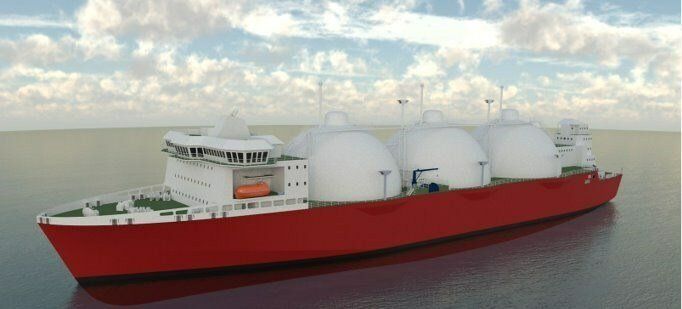onto the next step
Houston company gets greenlight for liquid hydrogen storage system

CB&I got the approval it was looking for on its cargo containment system for liquid hydrogen. Photo courtesy
CB&I, the storage business of Houston-based energy contractor McDermott International, has gotten a preliminary green light for its design of a cargo containment system for liquid hydrogen.
DNV, a classification body for the maritime industry, extended the preliminary approval for the system’s design. CB&I is working on the project with Shell International Trading and Shipping, which transports crude oil, gas, carbon dioxide, and other cargo.
The Shell transportation unit operates the Suiso Frontier, the world’s first ship for hauling liquid hydrogen (LH2). The vessel can carry 75 metric tons of LH2. The Suiso Frontier, which completed its maiden voyage between Australia and Japan in 2022, is the key component of a $360 million coal-to-hydrogen venture.
CB&I designs and builds storage facilities, tanks, and terminals for energy companies. McDermott provides engineering and construction services for the energy industry.
Cesar Canals, senior vice president of CB&I, says his company’s collaboration with Shell and DNV is “making large-scale liquid hydrogen storage and transport more economical. This approval is a major milestone in making this groundbreaking technology available to all companies looking to build LH2 carriers, and we look forward to the possibilities this brings to advancing the hydrogen energy supply chain.”
The containment system’s design is based on CB&I’s technology for onshore storage of LH2. Over the past 60 years, CB&I has designed and built more than 130 onshore storage tanks for LH2.
“The combined cargo containment system and hull design effort aims to address the energy density challenge, benefitting from LH2’s properties and achieving more energy onboard,” says CB&I. “The cargo containment system was integrated into a concept vessel design developed by Houlder, which includes a hull that is optimized for the low-density cargo around … three large tanks.”
Today, LH2 is transported primarily via trucks and pipelines. The Getting to Zero Coalition, a proponent of zero-emission vessels, says the Suiso Frontier represents the first step toward commercializing a global LH2 supply chain by 2030.
“Maritime distribution of hydrogen promises much more flexible energy transfer than transmission of electricity generated from renewables, especially for longer distances,” according to a sponsored article published by Nature.com.